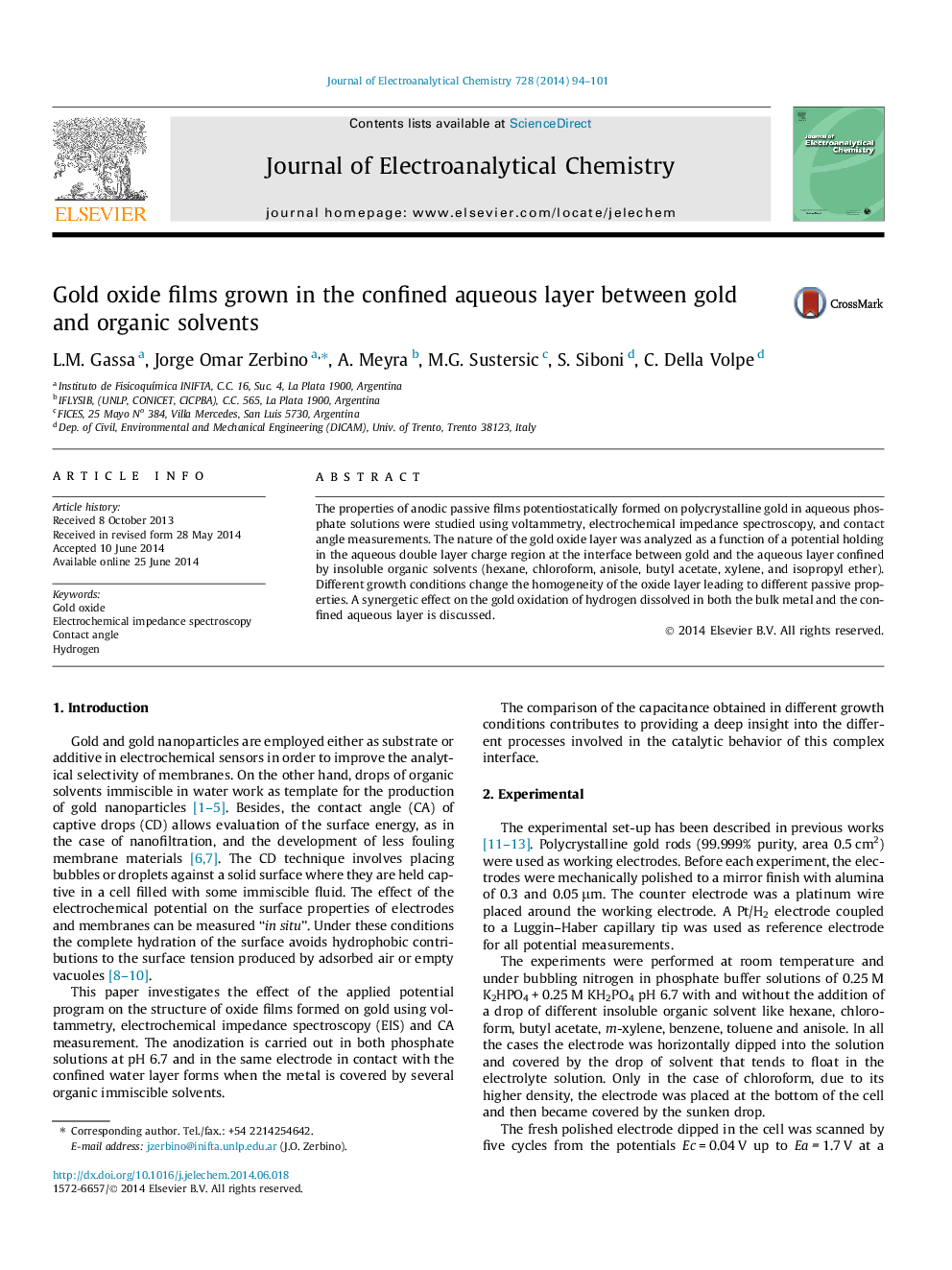| Article ID | Journal | Published Year | Pages | File Type |
|---|---|---|---|---|
| 218727 | Journal of Electroanalytical Chemistry | 2014 | 8 Pages |
•Gold oxide is grown in a confined aqueous layer on gold polycrystalline electrodes.•The contact angle of the captive drop of the organic solvents is near to 180°.•The effect of the buoyancy effect on the contact angle is discussed.•After cathodization the Bode diagram shows a splitting of the phase peak.•Hydrogen dissolved in the bulk metal and in the confined aqueous layer produces a faceting of the aged oxide.
The properties of anodic passive films potentiostatically formed on polycrystalline gold in aqueous phosphate solutions were studied using voltammetry, electrochemical impedance spectroscopy, and contact angle measurements. The nature of the gold oxide layer was analyzed as a function of a potential holding in the aqueous double layer charge region at the interface between gold and the aqueous layer confined by insoluble organic solvents (hexane, chloroform, anisole, butyl acetate, xylene, and isopropyl ether). Different growth conditions change the homogeneity of the oxide layer leading to different passive properties. A synergetic effect on the gold oxidation of hydrogen dissolved in both the bulk metal and the confined aqueous layer is discussed.
